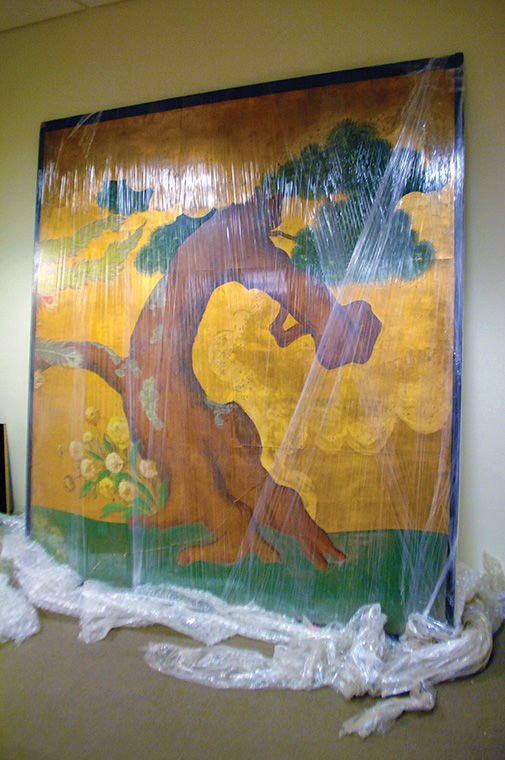Japanese phoenix paintings enjoy Park District rebirth
September 8, 2015

Three Japanese sliding door paintings previously thought to have been lost in a fire were recently discovered in a Chicago Park District storage facility, located at 4100 N. Long Ave., according to an August 26 City of Chicago press release.
The paintings, first exhibited at the 1893 World’s Fair Columbian Exposition, are known as “fusuma” in Japanese, said Janice Katz, associate curator of Japanese art at The Art Institute of Chicago. Fusuma are decorated wooden panels that function as sliding walls in traditional homes. Though remarkably beautiful, they are also fully functional and are often used to expand and define spaces.
Initially, the significance of the paintings went unnoticed.
“The first time I saw the paintings was 15 years ago. It was more about putting the puzzle pieces together in my mind,” said Julia Bachrach, Park District historian.
When Bachrach relocated to a new Park District building in 2000, a staff member assisting in the move called her to the basement after seeing the paintings, she said.
“They really don’t look that old—they’re brightly colored, and they’ve got lots of gold,” Bachrach said. “They looked kind of [like] art deco [pieces], so I thought they were from the 1933 World’s Fair.”
Although enchanted by the beauty of the paintings, Bachrach was occupied with other tasks. She wrapped them in plastic and put them into storage. It was 15 years later, while combing through archived documents, that she uncovered paperwork revealing the paintings actually date back to the 1893 World’s Fair.
“[The sliding doors] were in the central part of the Japanese National Pavilion that was at the 1893 World’s Fair, called the Phoenix Pavilion,” Katz said. “The images painted on the sliding doors are of gorgeous mythical phoenix birds with all of their plumage on gold ground. They’re very bright and vibrant.”
In addition to the sliding door paintings, the Phoenix Pavilion housed carved transom panels that were discovered in the 1970s and which have been on display at The Art Institute since 2011.
The Park District has not yet decided how the paintings will be exhibited. However, Katz said the Park District is working to ensure they receive the best care possible and are displayed for the public to enjoy.
Currently, Rachel Freeman, Asian art conservator at The Art Institute, is working to conserve the paintings. Art conservation occurs in three stages: testing, stabilization and remounting, she said. A precise timeline is impossible, but Freeman said the process will take “a substantial amount of time.”
Bachrach said she is also involved in a new project to revitalize the entire Jackson Park area.
“The Chicago Park District has been working with the army corps of engineers and a nonprofit organization, Project 120, to create very substantial landscape improvements to Jackson Park,” she said.
While the Park District plans to restore forgotten beauty to the historic area, the phoenix—a mythological creature fabled to have been reborn from its own ashes—is a meaningful symbol.
“It’s really an amazing coincidence. The timing is fantastic,” Katz said.







